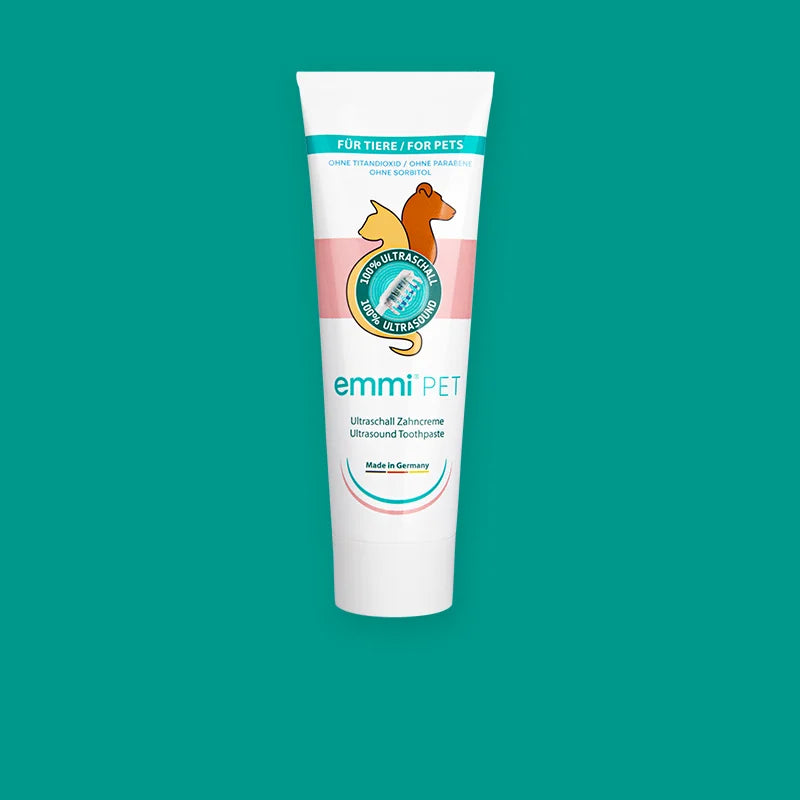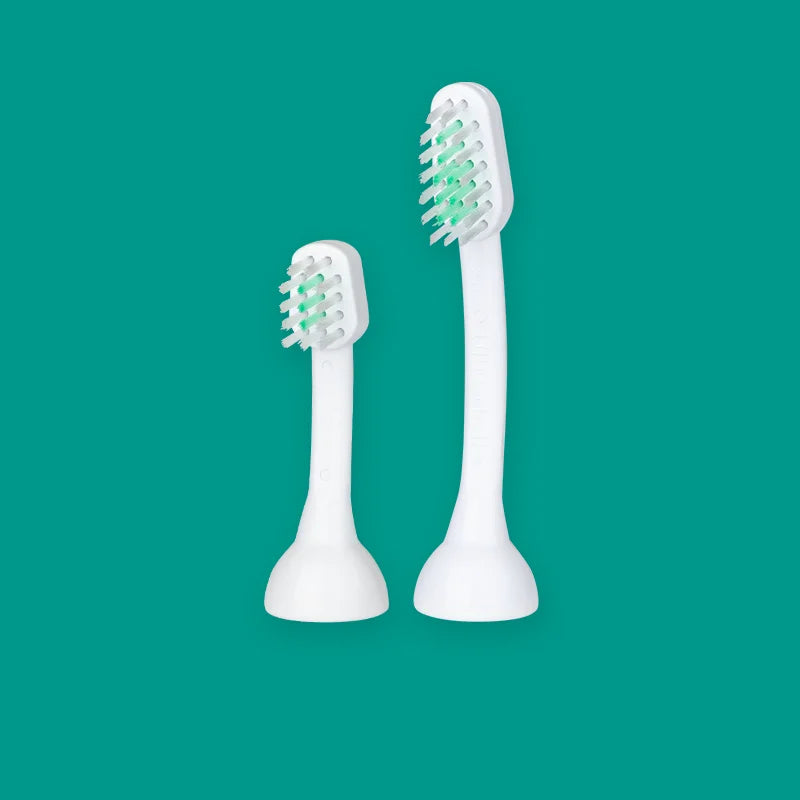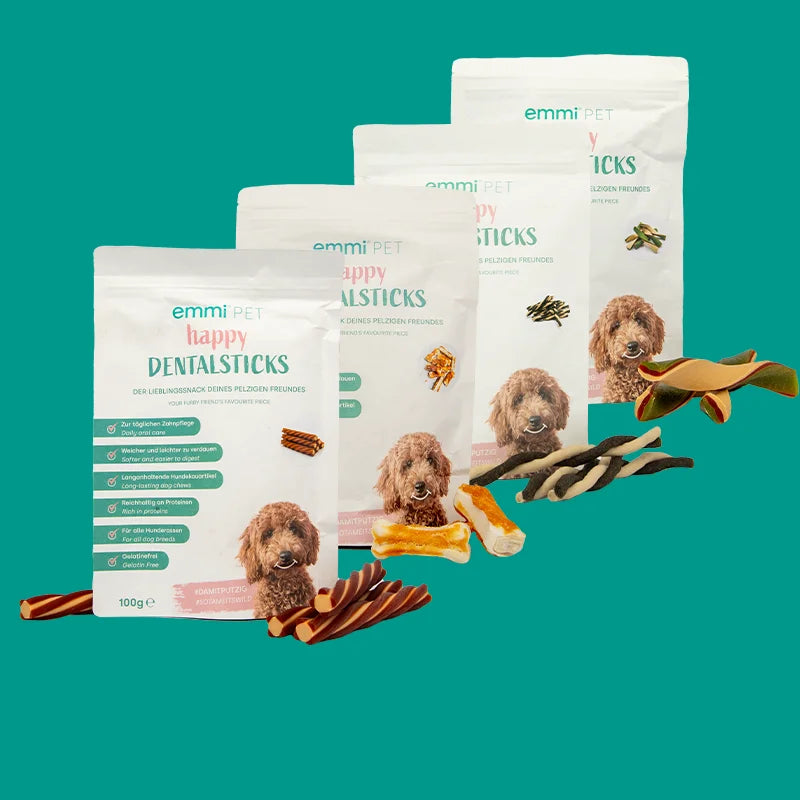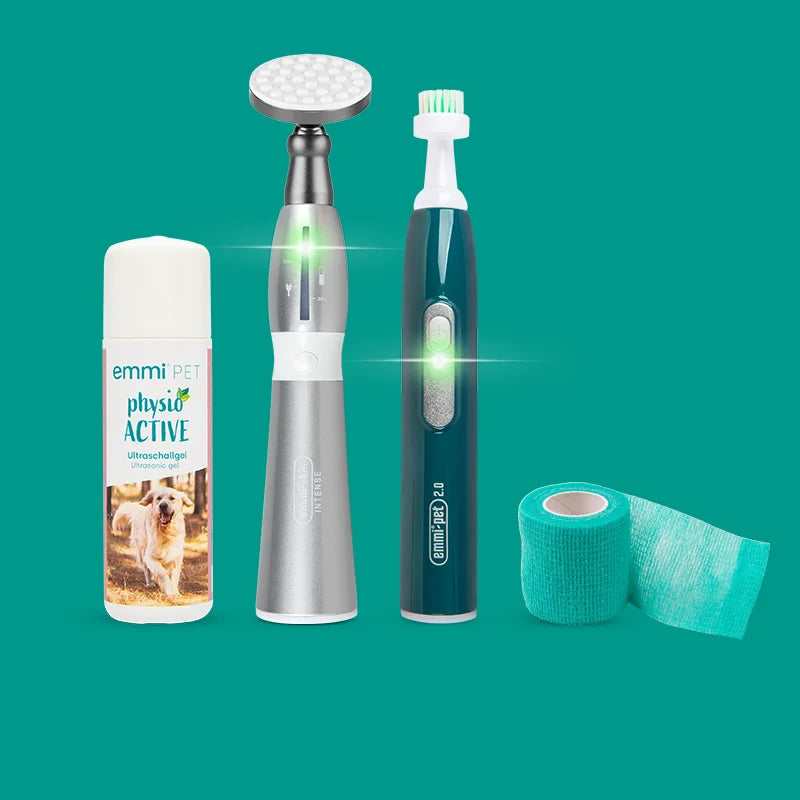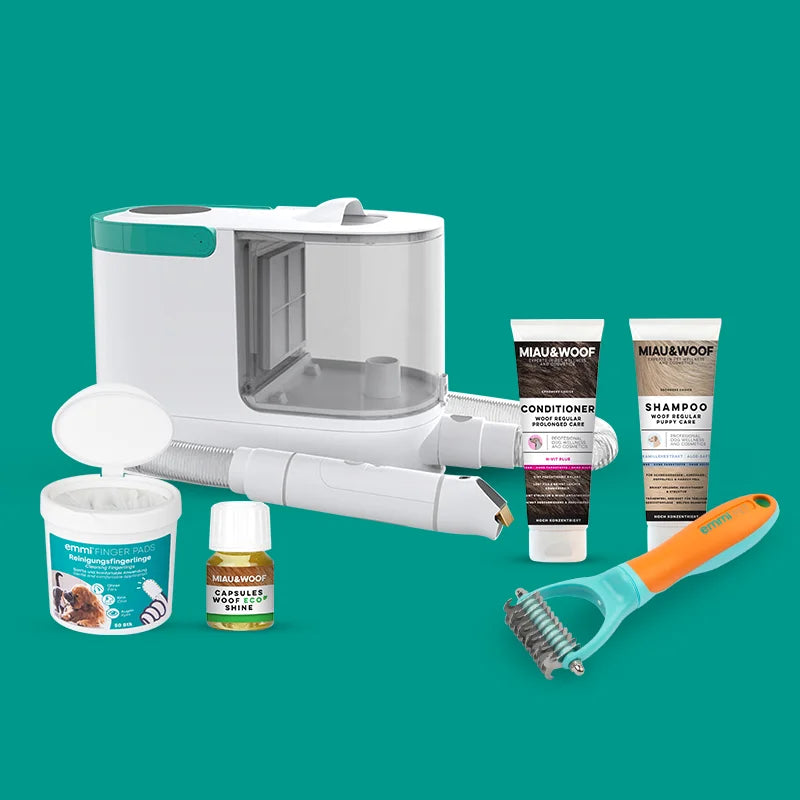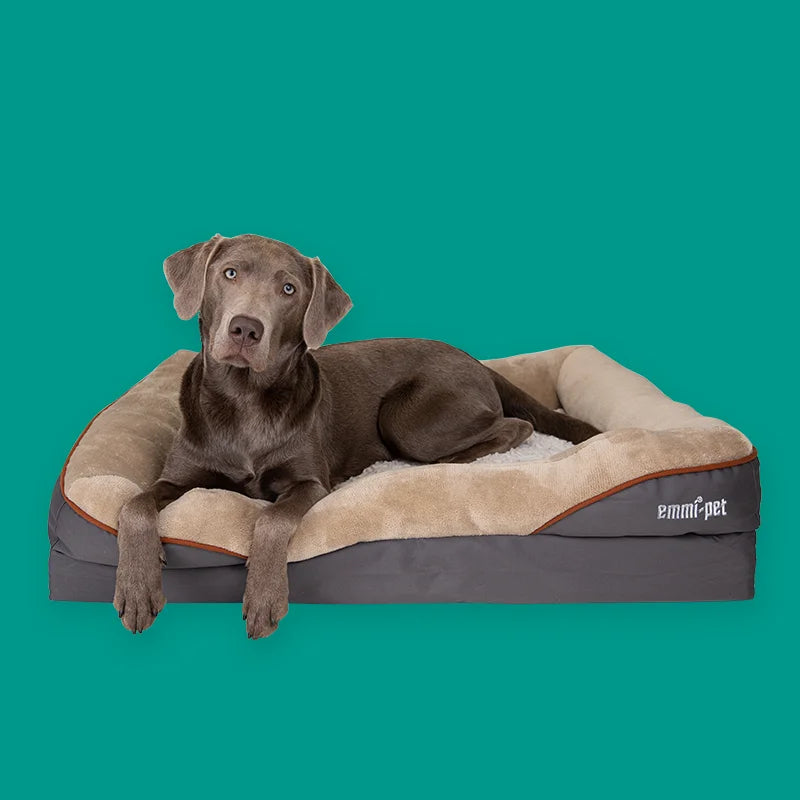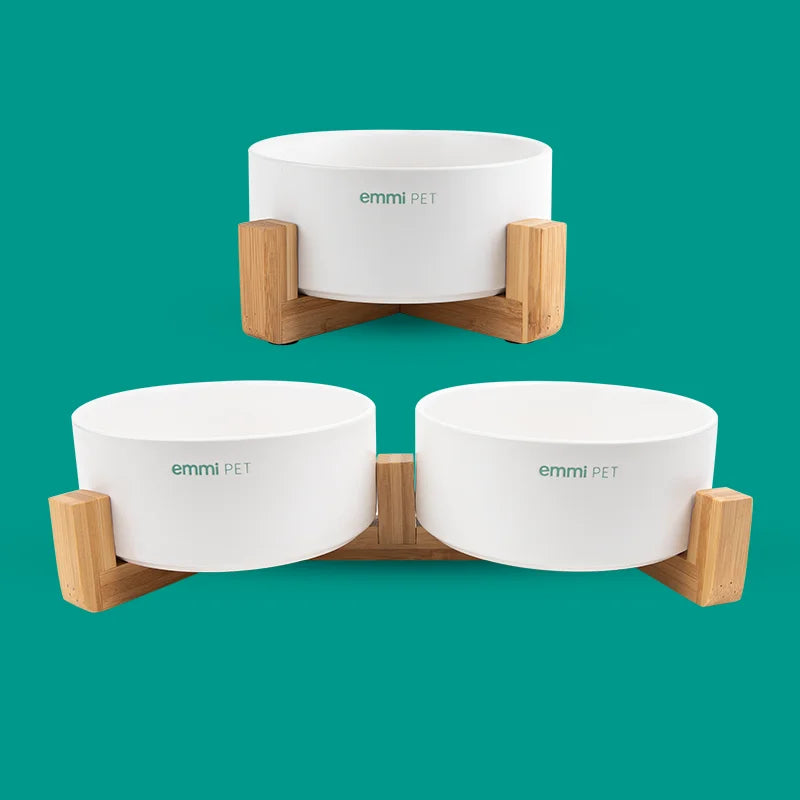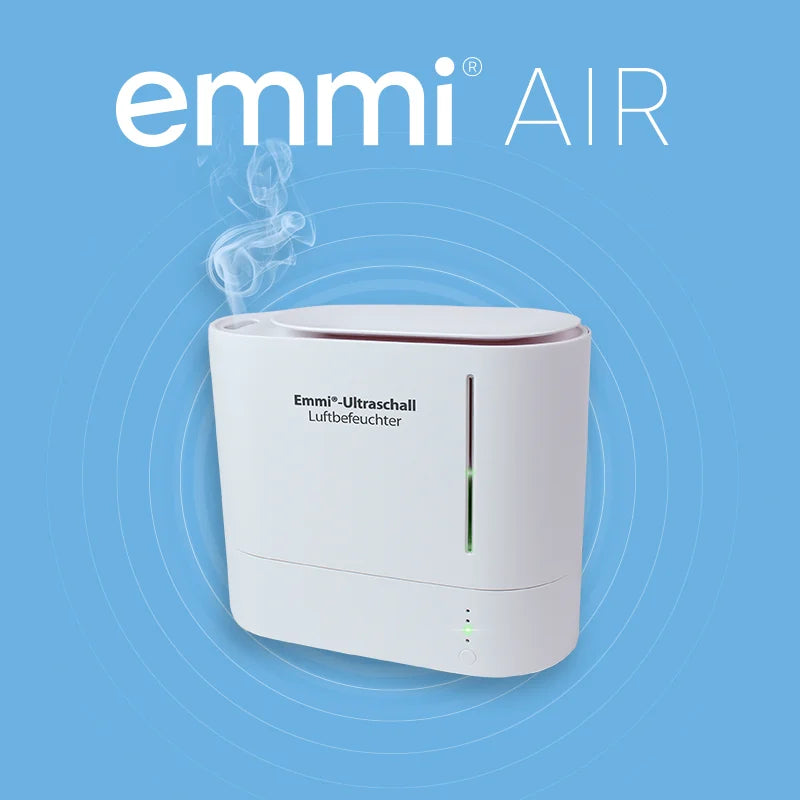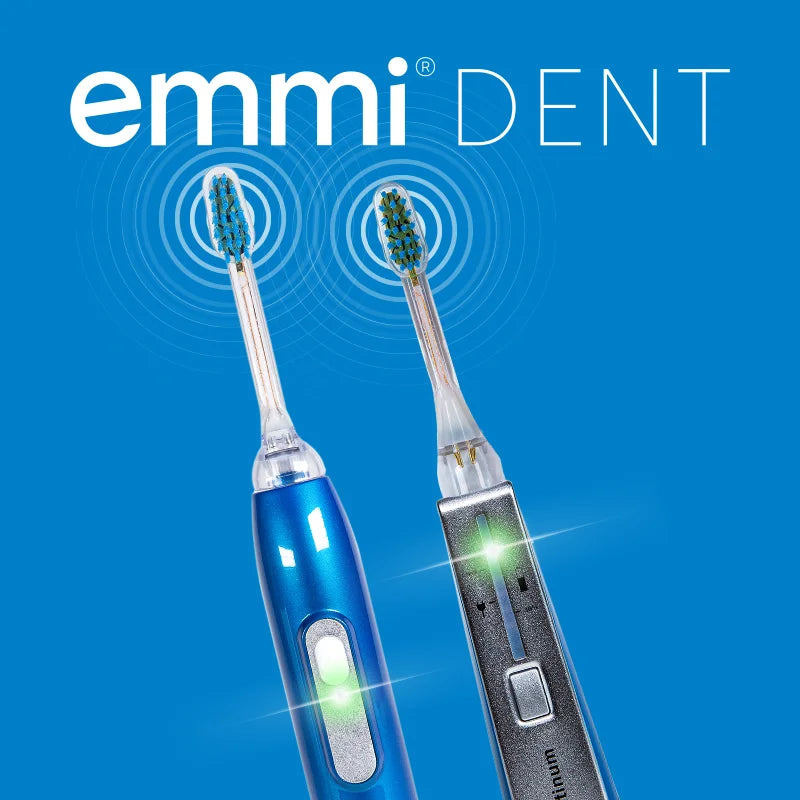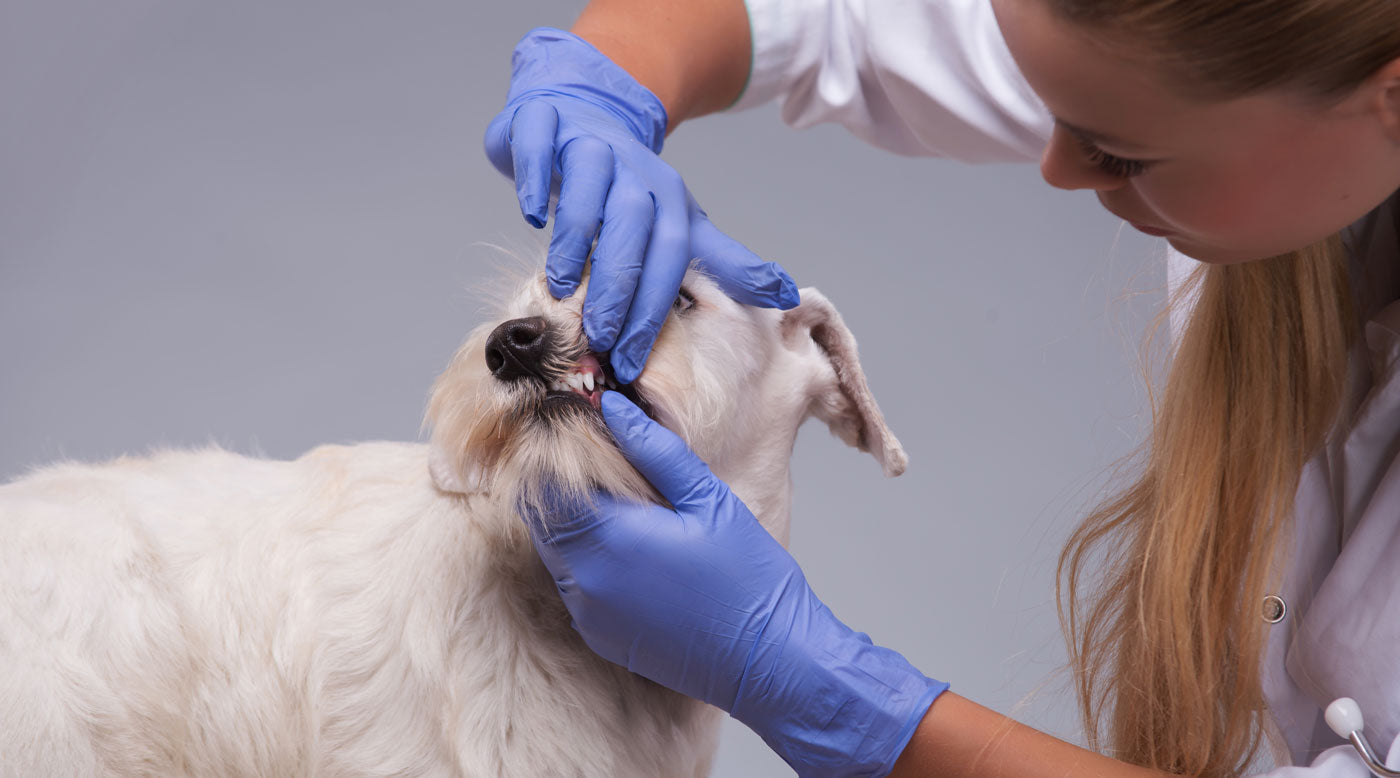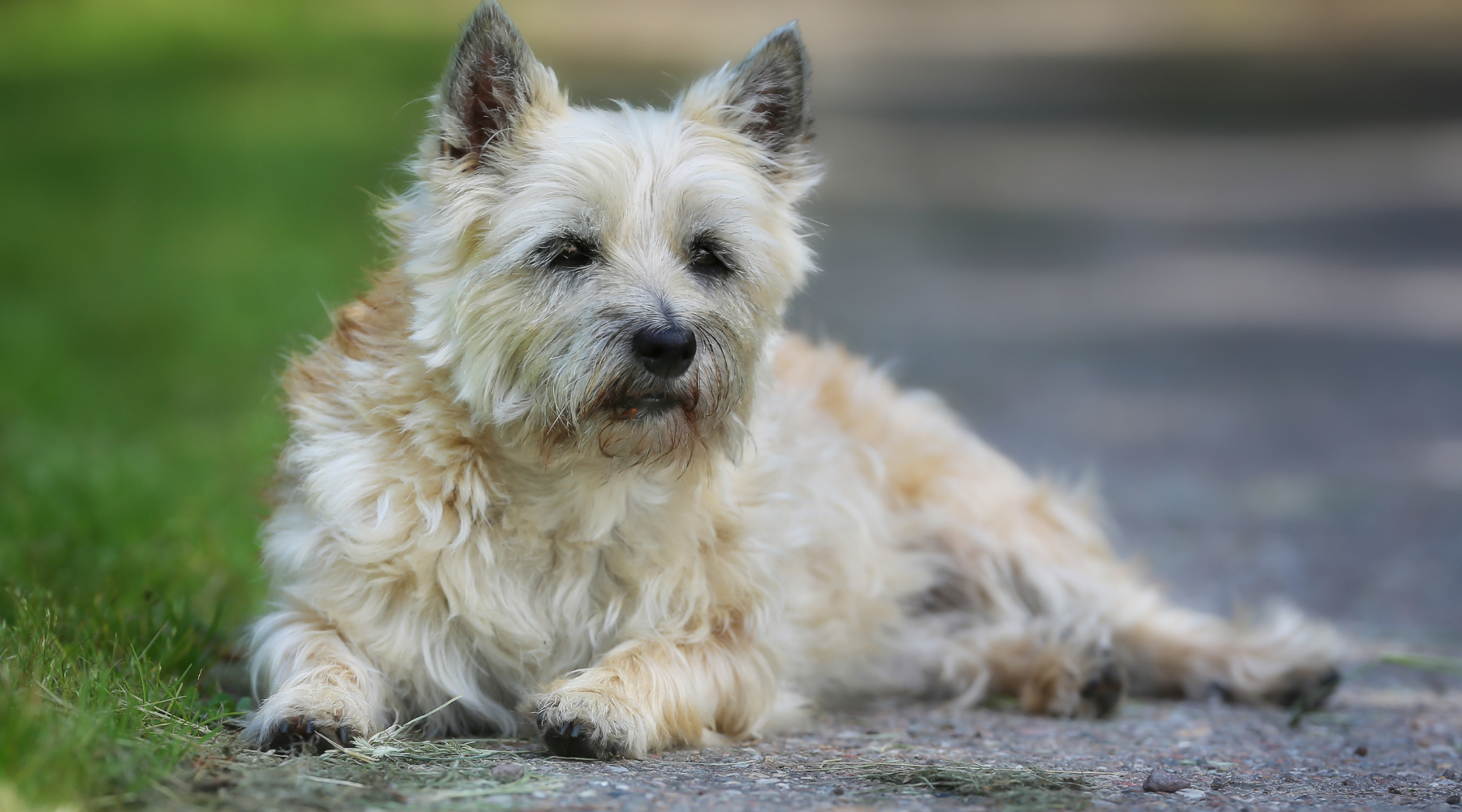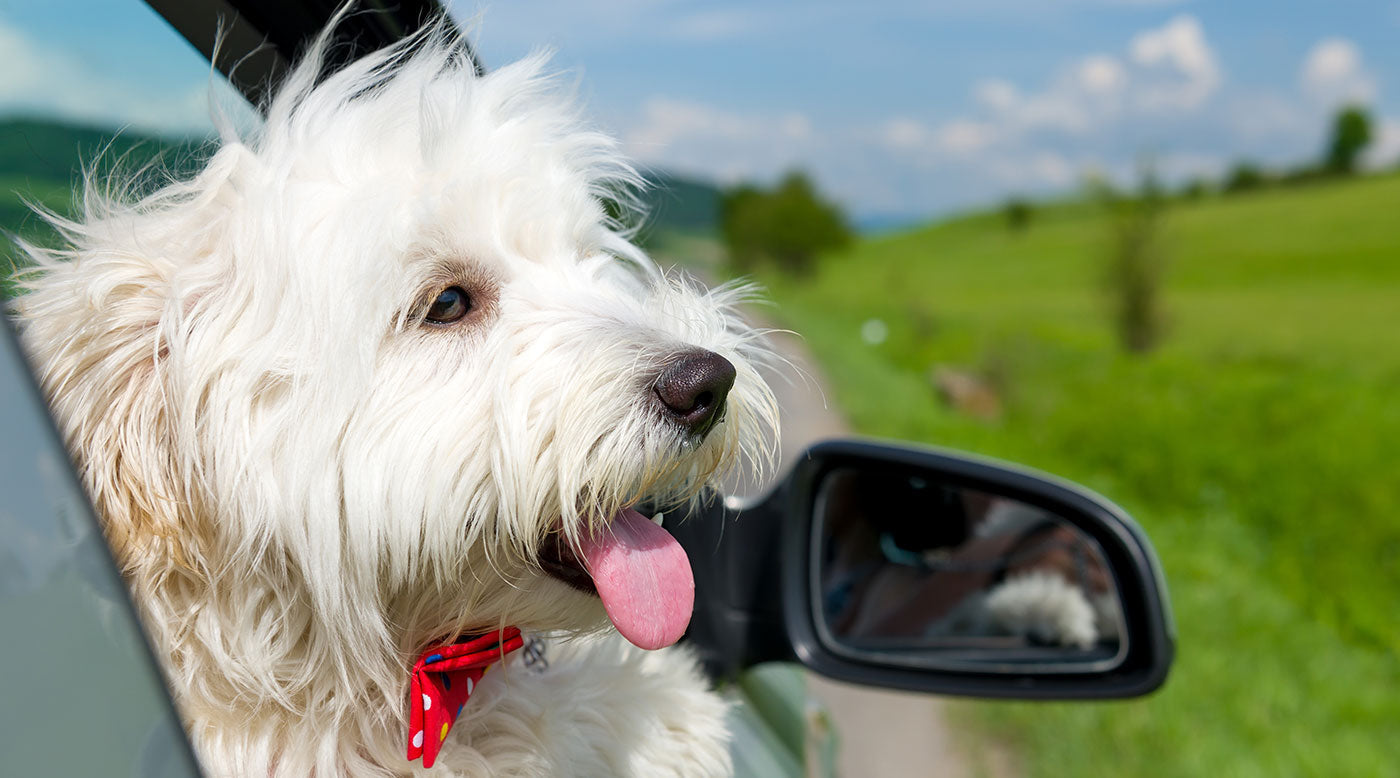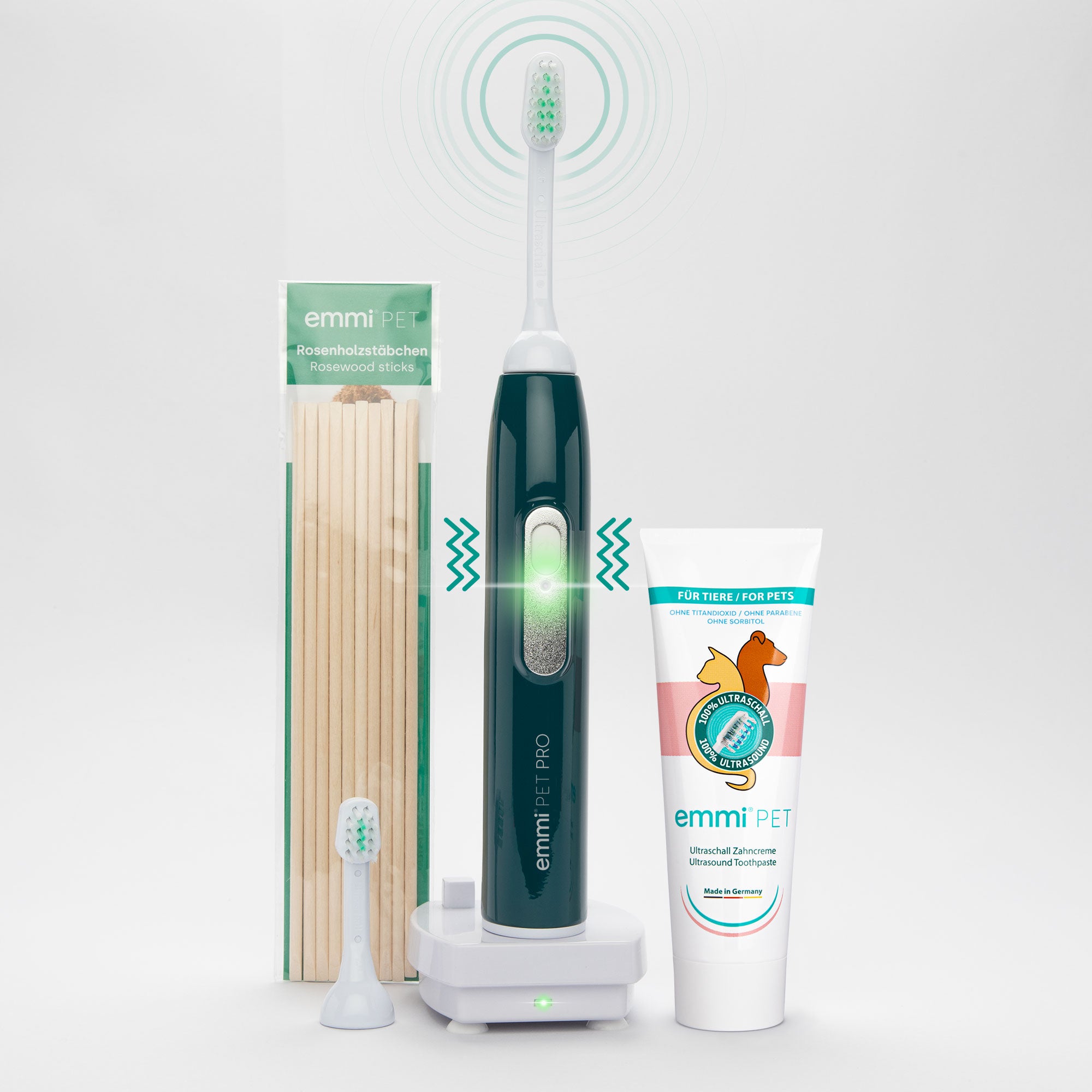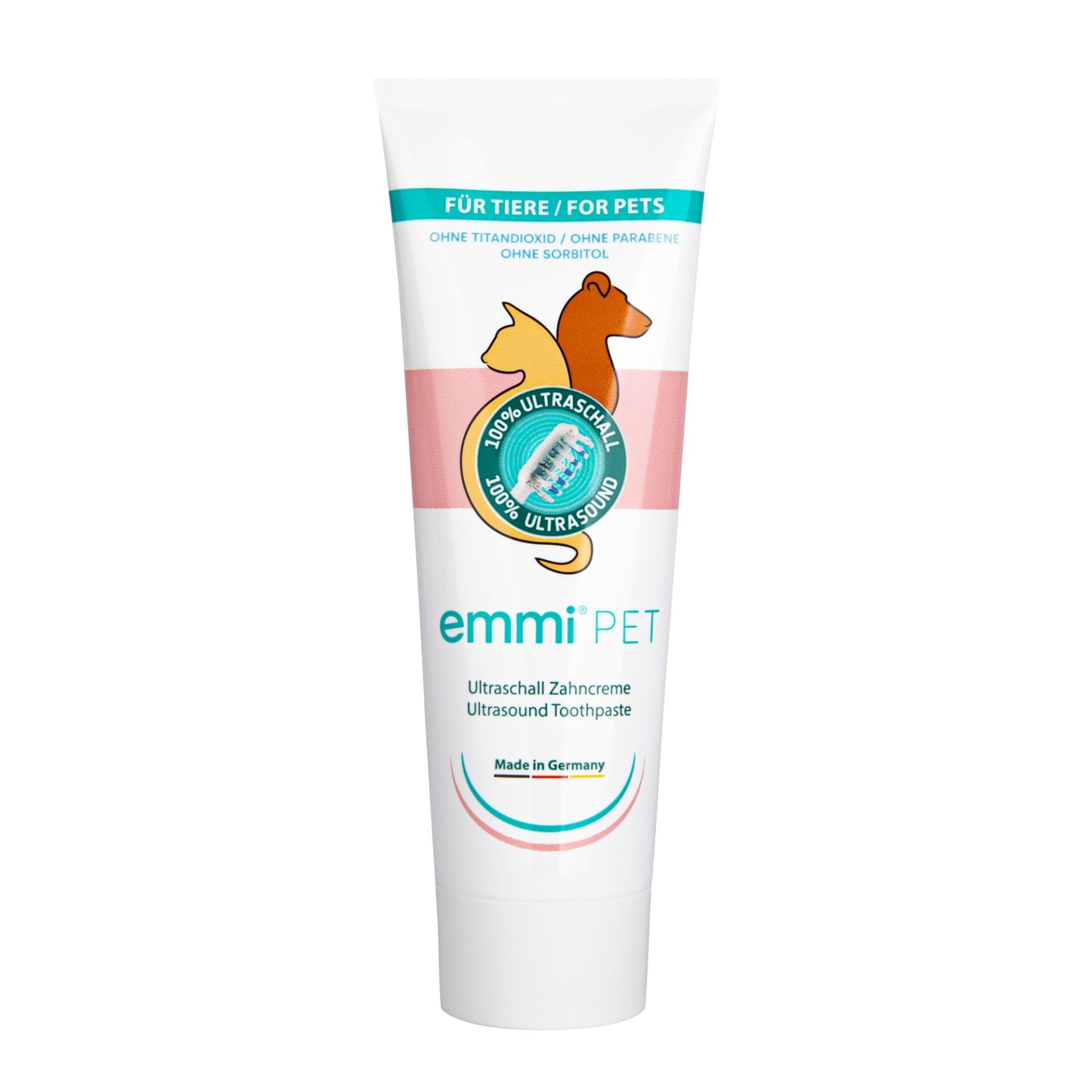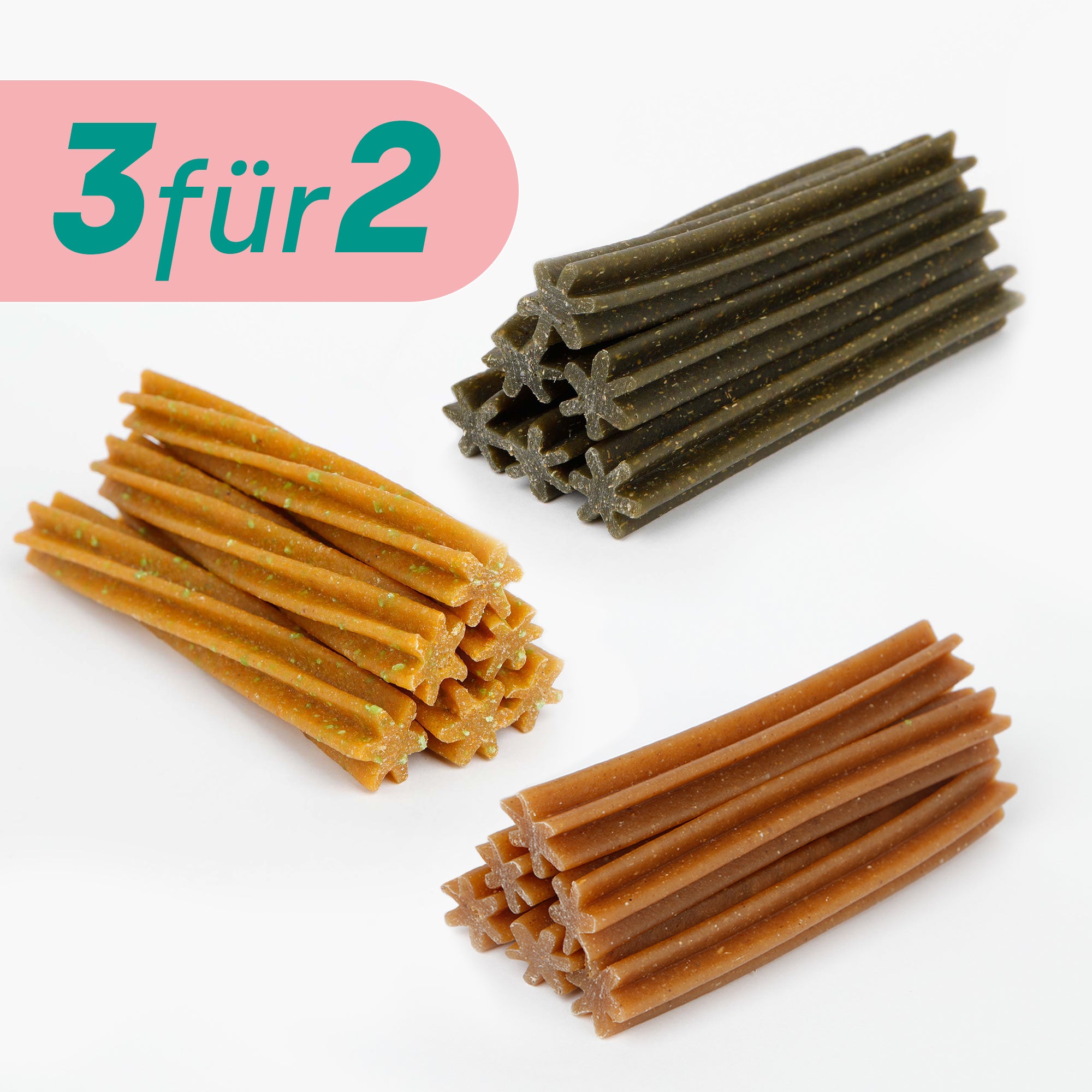Does your dog seem reserved, eat hesitantly, or withdraw noticeably often? Such changes are often attributed to behavior—but the cause often lies in the mouth . Toothache in dogs is one of the most common, yet least recognized, health problems. If left untreated, it can not only significantly impair your four-legged friend's well-being, but also, over time, place strain on vital organs such as the heart, kidneys, and liver.
In this article, you'll learn how to reliably recognize toothache in your dog, how to respond correctly in acute cases, and which care routine can provide long-term protection. Gentle, effective, and stress-free with our modern emmi-pet ultrasound technology.
Why toothache in dogs often goes undiagnosed
Dogs are true masters at hiding pain. Their instinctive behavior stems from times when weakness meant a risk to survival, and so they usually only show symptoms when the situation is well advanced. Toothache, in particular, sneaks quietly into everyday life. Instead, only minimal changes and signals reveal that something is wrong: Your dog suddenly chews only on one side, withdraws while playing, or starts drooling more.
These subtle changes are easy to overlook, yet they speak volumes. According to a recent study, over 60 percent of dogs over the age of three suffer from dental problems that require treatment. The spectrum ranges from seemingly harmless tartar to profound inflammation of the jaw. Those who identify early and remain attentive can save their dog a great deal of suffering and ensure a pain-free, healthy life in the long run.
Typical warning signs of toothache in dogs
Toothache isn't always obvious at first glance. In most cases, it creeps quietly and insidiously into your dog's daily routine. What initially seems inconspicuous can already be a clear warning sign: If your dog suddenly only eats soft food or stops chewing altogether, this is a serious indication of problems in the mouth area. Chewing on one side of the mouth is also typical and often an attempt to relieve pressure on the painful side.
You should also be alert if your dog rubs its paws over its mouth more frequently or appears more reserved than usual when playing, especially during tug-of-war games or when picking up hard objects. In such moments, it's worth taking a careful look inside the mouth, if your dog allows it.
Other possible symptoms that may indicate pain in the mouth area include:
- increased salivation ,
- a sweetish, foul breath odor (halitosis) ,
- small traces of blood on toys or chews ,
- a cracking sound when chewing ,
- reduced desire to play or
- a sudden defensive reaction when touched on the head.
Particularly alarming are external changes such as facial swelling or a tilted head posture, as both can indicate underlying inflammation, abscesses, or even damage to the tooth root. The sooner you recognize such signs and have them examined by a veterinarian, the better the chances of gently relieving pain and preventing subsequent damage.
First aid and vet visit: How to help your dog step by step
If you suspect your dog is suffering from toothache, a calm and caring approach is required. First, observe him carefully: Is he eating more slowly, chewing only on one side, or withdrawing more often? These changes are serious signs of oral discomfort.
With a steady hand, you can carefully examine the dog's mouth—if your dog allows it. Look for typical warning signs such as reddened gums, swelling, plaque, injuries, or pus-filled areas. The smell from the mouth is particularly telling: A strong, foul, or sweet-smelling breath can indicate underlying inflammation or abscesses.
To provide your dog with short-term relief, you should only offer him soft or slightly moistened food . This protects sensitive areas and makes it easier to eat. What you should definitely not do: administer human painkillers. Many of these medications are toxic to dogs and can cause life-threatening reactions.
If your dog shows signs such as excessive salivation, fever, increased restlessness, or clearly visible pain, a prompt visit to the vet is essential. Make an appointment as soon as possible – even if you're not entirely sure. Until a veterinary examination is completed, no further manipulation of the mouth , including any attempts at dental care, is recommended. Rest is the priority now – for more peace, less irritation, and a reliable diagnosis.
Prevention: Prevent problems with daily dental care
The most effective treatment begins before a problem even arises. Toothache in dogs can often be prevented by early and regular gentle dental care. Bacterial plaque, tartar, and inflammatory processes develop gradually but can be effectively stopped with targeted care.
It's important that you choose a grooming method that's not only effective but also comfortable for your dog . Ultrasonic toothbrushes like our emmi-pet have proven particularly effective in this regard. They clean without any brush movement, friction, or noise and are ideal for sensitive dogs or those with already irritated gums. The gentle vibrations reach even hard-to-reach areas and remove plaque thoroughly yet gently.
In addition, the use of tooth-friendly chews contribute to oral health. Look for high-quality ingredients that not only encourage chewing but also support the natural oral flora.
Most importantly, however, is regularity : Dental care should be a loving part of everyday life. Just like brushing the coat or taking a daily walk. Only then can your dog maintain healthy, strong teeth well into old age and be free of pain, inflammation, and unpleasant odor.
FAQ – Frequently asked questions about toothache in dogs
Toothache in dogs raises many questions. Especially because the signs are often subtle, and there's uncertainty about how to respond. In this section, you'll find the most important answers to common questions from dog owners, providing clarity and helping you act confidently should the worst happen.
How do I recognize toothache if my dog doesn't howl?
Most dogs don't show pain through whining or whining, but rather through changes in behavior . Look for signs such as reduced food intake, withdrawal, increased salivation, or pawing at their mouth. Avoiding chew toys or a change in head posture can also be signs of discomfort.
Can I treat my dog's toothache myself?
No. Even if you can provide temporary relief through soft food or rest, the underlying cause must always be diagnosed and treated by a veterinarian. Self-medication with home remedies or human painkillers can harm your dog and should be avoided at all costs. Please contact your veterinarian.
Is dental care with ultrasound really effective?
Yes. The effectiveness of ultrasonic cleaning has been confirmed in several studies. The technology enables particularly gentle yet deep cleaning, without any mechanical movement or pressure. It is therefore a particularly recommended solution for sensitive dogs or animals with pre-existing conditions to remove harmful bacteria and their deposits.
How much does professional dental treatment at the vet cost?
The costs depend on the condition of your teeth, the extent of the treatment, and the anesthesia required. Typically, you should expect to pay between €150 and €600 . Regular dental care at home can help avoid these procedures in the long run.
When should I start dental care for my dog?
As early as possible. It's best to start as early as puppyhood, when your dog can still be introduced to new routines through play. This way, dental care becomes a familiar part of everyday life, and the chances of permanently healthy teeth increase significantly.

